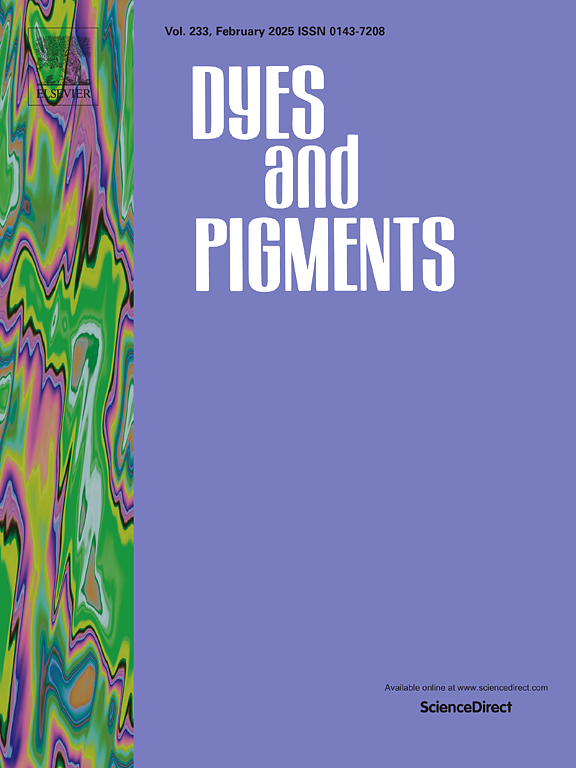Scalable fabrication and characterization of high refractive index luminescent dye-doped polymer films for planar waveguides and thermal imprint
IF 4.1
3区 工程技术
Q2 CHEMISTRY, APPLIED
引用次数: 0
Abstract
Polymer films with high refractive index (RI) and doped with luminescent dyes enable the generation of light inside the waveguiding film without any additional complex light coupling techniques. However, some luminescent dyes may tend to aggregate in polymer matrices, which may lead to a reduction in the luminescence efficiency. Therefore, the mutual compatibility between various dyes and high-RI matrices as well as the fabrication technology are crucial in the manufacturing of photonic devices.
This study presents the fabrication via dip-coating method and comprehensive characterization of formable polymer films including dye-doped ones, for planar waveguides. Using this cost-effective and easy-to-scale-up technique it was possible to obtain polystyrene (PS), poly(benzyl methacrylate) (PBzMA), polycarbonate (PC), and polysulfone (PSU) homogenous undoped films on soda-lime glass substrates. The thickness of the obtained layers was in the sub-micrometric range, and their RI was in the range of 1.56–1.62, which was determined using profilometry and spectroscopic ellipsometry. Numerical calculations confirmed that the films fabricated on soda-lime glass substrates meet the criteria to work as planar waveguides. Moreover, the structurization of the polymer films using the thermal nanoimprint lithography (TNIL) technique in the temperature range of 80–200 °C was presented, revealing the highest processing temperature for the PSU films and the lowest one for the PBzMA films.
High RI PSU films doped with eleven different luminescent organic dyes, exhibiting emissions spanning the entire visible spectral range, were successfully fabricated. Spectroscopic techniques such as absorption, excitation, and emission measurements were used to characterize their luminescent properties. Moreover, a dye exhibiting solvatochromism (Nile Red – NR), and a dye showing a tendency for aggregation (Rhodamine 6G – Rh6G) were investigated in all the studied polymer matrices. Among all the examined polymers, PSU was the most polar and caused the lowest luminescence quenching of the Rh6G dye, having simultaneously the highest RI (1.62). We anticipate that the fabricated films could be used in planar photonic systems as waveguiding films, in light amplification systems, or as solar cell concentrators.

求助全文
约1分钟内获得全文
求助全文
来源期刊

Dyes and Pigments
工程技术-材料科学:纺织
CiteScore
8.20
自引率
13.30%
发文量
933
审稿时长
33 days
期刊介绍:
Dyes and Pigments covers the scientific and technical aspects of the chemistry and physics of dyes, pigments and their intermediates. Emphasis is placed on the properties of the colouring matters themselves rather than on their applications or the system in which they may be applied.
Thus the journal accepts research and review papers on the synthesis of dyes, pigments and intermediates, their physical or chemical properties, e.g. spectroscopic, surface, solution or solid state characteristics, the physical aspects of their preparation, e.g. precipitation, nucleation and growth, crystal formation, liquid crystalline characteristics, their photochemical, ecological or biological properties and the relationship between colour and chemical constitution. However, papers are considered which deal with the more fundamental aspects of colourant application and of the interactions of colourants with substrates or media.
The journal will interest a wide variety of workers in a range of disciplines whose work involves dyes, pigments and their intermediates, and provides a platform for investigators with common interests but diverse fields of activity such as cosmetics, reprographics, dye and pigment synthesis, medical research, polymers, etc.
 求助内容:
求助内容: 应助结果提醒方式:
应助结果提醒方式:


